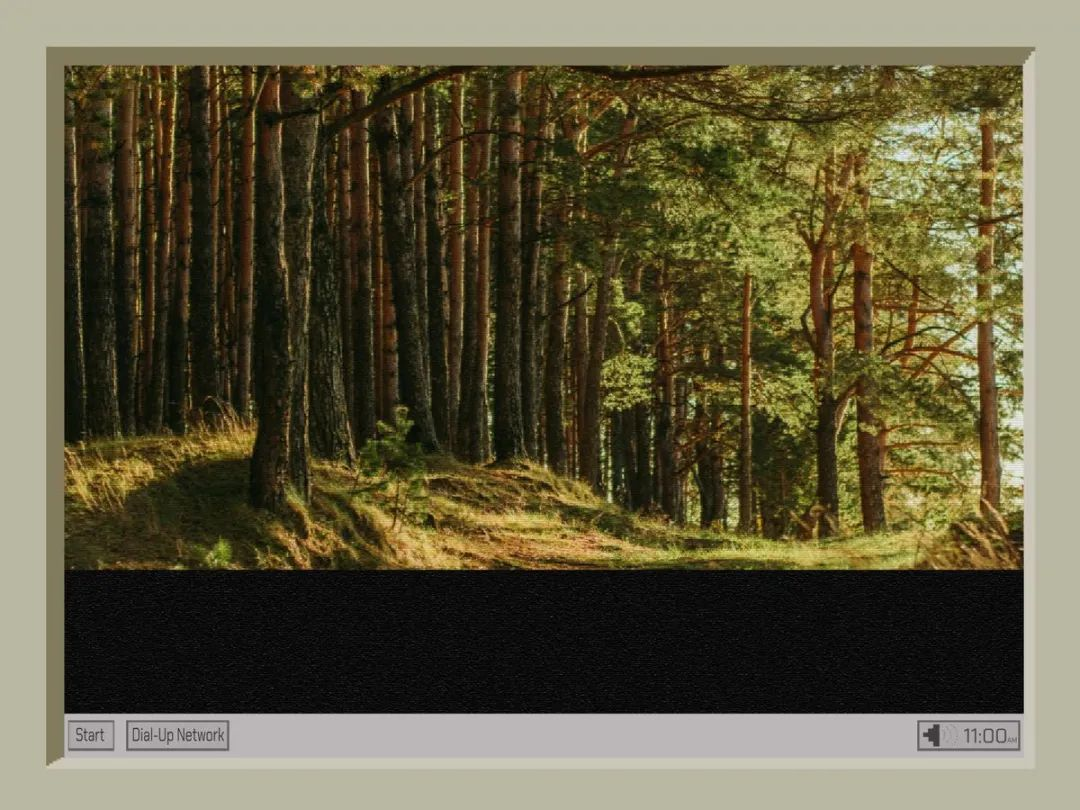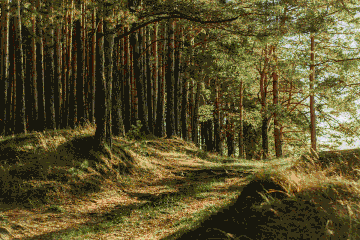Why JPEG Still Dominates the Web: Thirty years ago, JPEG became our primary way to share digital photos on the Internet.

For roughly three decades, JPEG has been the dominant image format on the World Wide Web. But it wasn't the web's original format. In fact, the first mainstream graphical browser, NCSA Mosaic, initially didn't support inline JPEG files—only inline GIFs and some other formats lost to history. However, JPEG had numerous advantages over the formats it quickly replaced.
Although JPEG didn't take off overnight—it first appeared in Netscape in 1995, three years after the image standard was officially released—it naturally aligned with web browsers. JPEG files degraded better than GIFs, preserving more of the original image's appearance, which allowed the format to achieve greater success. While it doesn't support animation, it gradually evolved from a format that modems struggled to render to one suitable for high-end professional photography.
In the context of the internet, reducing image quality is crucial. But that's not the only reason JPEG is so valuable to the digital world. A vital factor is that it's a well-documented standard built by numerous stakeholders.
GIF is a de facto standard. JPEG is a true standard.
How important was it for JPEG to become a standard? Let me tell you a story.
In 2013, before GIF creator Steve Wilhite received an award honoring his work, he gave an interview to The New York Times and inadvertently sparked a debate. Simply put, no one knew how to pronounce the acronym of the image format he'd created—the Graphics Interchange Format (GIF). Wilhite took the opportunity to clarify: it's pronounced with a soft "G," like the peanut butter brand: "It's a soft 'G,' pronounced 'jif.' End of story," he said.
At the time, I posted Wilhite's quote on my popular Tumblr account, which was at the center of the GIF world. Soon after, my post was reblogged thousands of times—almost all disagreeing with Wilhite's stance. Quickly, Wilhite's statement became a meme.
This situation showed that Wilhite, who died in 2022, didn't develop his format through a committee. He could say it sounded like "JIF" because he created it himself. In 1987, he took on the project as an employee of CompuServe; he made the thing, and that was it. The initial documentation describing how it worked? Very simplistic. Thirty-eight years later, we're still using GIFs—but they never became as popular as JPEGs.
JPEG, which officially arrived about five years later, was . In fact, there's a world of difference between them—and that's essentially the difference between a (de facto standard) and an actual standard. And this was crucial to its eventual widespread adoption.
In this article, we'll reduce the quality of this image. The full image size is 13.7 MB. Irina Iriser
The Birth of the JPEG Format
The Joint Photographic Experts Group, through the collective efforts of dozens of stakeholders, ultimately aimed to create a format that met everyone's needs. (Reflecting its committee-driven origins, the format's name—an acronym of the organization that designed it—avoids confusion.) When the format was finally released to the world, it became the subject of a book over 600 pages long.
JPEG: Still Image Data Compression Standard, co-authored by IBM employees and JPEG organization stakeholders William B. Pennebaker and Joan L. Mitchell, describes the state of multimedia images, which failed to balance photorealism and the need for instantaneity. They believed standardization could solve this problem.
The authors wrote: "The problem is not a lack of image compression algorithms (for technical work in this area has a long history), but a lack of standard algorithms—ones that allow image interchange between different applications."
They were absolutely right. For over 30 years, JPEG has made high-quality, high-resolution photos easily accessible across various operating systems. While we no longer need to compress JPEGs to the point of near-invisibility, this capability helped enable the modern internet.
As described in the book, Mitchell and Pennebaker received support from IBM to continue their research and collaborate with the JPEG committee, and this support led them to develop many of the foundational patents for the JPEG format. As noted in a patent filed by Mitchell and Pennebaker in 1988, IBM and other members of the JPEG standards committee (such as AT&T and Canon) were developing methods to utilize compression technology to more easily transmit high-quality images in limited environments.
Each member brought their own needs to the process. Canon was obviously more focused on printers and photography, while AT&T focused on data transmission. Together, the two companies created a set of standards that have stood the test of time.
Interestingly, all this meant that the first program capable of using JPEG compression appeared on OS/2, not MacOS or Windows—a fascinating but failed graphical operating system developed by Pennebaker and Mitchell's employer, IBM. As early as 1990, OS/2 supported the format through the OS/2 Image Support application.
When the image quality is reduced to half of the original, its size shrinks to approximately 2.6 MB. By reducing the quality by half, we've shrunk it to one-fifth of the original file size. Original image: Irina Iriser
What Happens When JPEGs Are Heavily Compressed
JPEG files differ from PNGs or GIFs in that data quality degrades after compression. The goal of a JPEG image is to still look like a photo even if some compression is needed to keep it at a reasonable size. This way, you can display something close to the original image with fewer bytes.
Or, as Pennebaker and Mitchell put it, "The most effective compression is achieved by approximating the original image (rather than reproducing it exactly)."
At its core is a compression process called the Discrete Cosine Transform (DCT), a form of lossy compression encoding widely used in various compression formats, especially in digital audio and signal processing. Essentially, it reduces quality by removing details while preserving the core of the original through approximation. The stronger the cosine transform, the higher the compression of the final result.
Developed by researchers in the 1970s, the algorithm essentially takes a grid of data and processes it as if controlling its frequency with a knob. Controlling the data rate is like controlling the flow of a faucet: the more data you want, the higher you set the value. The DCT algorithm allows a small amount of data to be retained even with high compression, even if this means the result is slightly lossy. In other words, not all data may be retained during compression, but the DCT algorithm can preserve the core of the data.
DCT is everywhere. If you've ever seen streaming video or online broadcasts degrade in quality due to a sudden drop in bandwidth, you've witnessed DCT in real-time application.
JPEG files don't have to use only one method to utilize DCT, as JPEG: Still Image Data Compression Standard explains:
The JPEG standard describes a family of large image compression techniques rather than a single one. It provides a "toolkit" of compression techniques from which applications can select elements to meet their specific needs.
The toolkit has four modes:
Sequential DCT, which displays the compressed image in sequence, like a curtain slowly rolling down
Progressive DCT, which displays the full image in the lowest resolution format and then adds details as more information becomes available
Sequential lossless, which uses a windowed format but doesn't compress the image
Hierarchical mode, which combines the first three modes—so it might start in progressive mode, then slowly load DCT compression, but ultimately achieve a lossless result
In the era when JPEG was born, modems were very common. This meant images loaded slowly, making progressive DCT the most suitable format for the early internet. Over time, progressive DCT mode became less common as many computers could load sequential DCT all at once.

The same forest, with quality reduced by 5%, now has a data size of approximately 419 kilobytes. Original image: Irina Iriser
When compressing an image using the Discrete Cosine Transform (DCT), the changes are often less noticeable in more complex, textured areas of the image (such as hair or leaves). These areas are harder to compress, meaning they retain their integrity longer. However, in solid color areas or regions where the image's color changes sharply (such as text on a page), the changes are often more obvious. Have you ever taken a screenshot of a social media post and found it looks noisy? Congratulations, you've just created a JPEG file.
Other formats, such as PNG, perform better with text because their compression formats are designed for lossless compression. (Side note: PNG's compression format, DEFLATE, was designed by Phil Katz, who also created the ZIP format. PNG adopted DEFLATE in part because it's a royalty-free compression format. So, this talented but tragically short-lived programmer improved the internet in multiple ways before his early death.)
In many ways, JPEG is a tool in our image-making toolkit. Despite its age and maturity, it remains one of our best choices for sharing photos on the internet. But it's not a one-size-fits-all tool—even though we often use it as such, like a wrench sometimes being used as a hammer.
Forgent Networks Claims to Own JPEG's Defining Algorithm
Beyond its quality, patent issues contributed to JPEG's popularity in the 1990s: starting in 1994, tech company Unisys tried to charge individual users who used GIF files, which utilized a patent owned by the company. This made the freely usable JPEG format even more popular. (This situation also contributed to the creation of the patent-free PNG format.)
Although JPEG is standard-based, it still could have faced the same fate as GIF due to the quirks of the patent system. A few years before the file format came out, two employees of Compression Labs filed a patent application for dynamic graphics compression. By the time people noticed its similarity to JPEG compression, the format was already ubiquitous.
Our forest, saved at 1% quality. This image is only about 239 KB but is still easily recognizable as the same photo. That's the power of JPEG. Original image: Irina Iriser
In 1997, a company called Forgent Networks acquired Compression Labs. The company eventually discovered this patent and began filing lawsuits over it, a series of events seen as a stroke of luck.